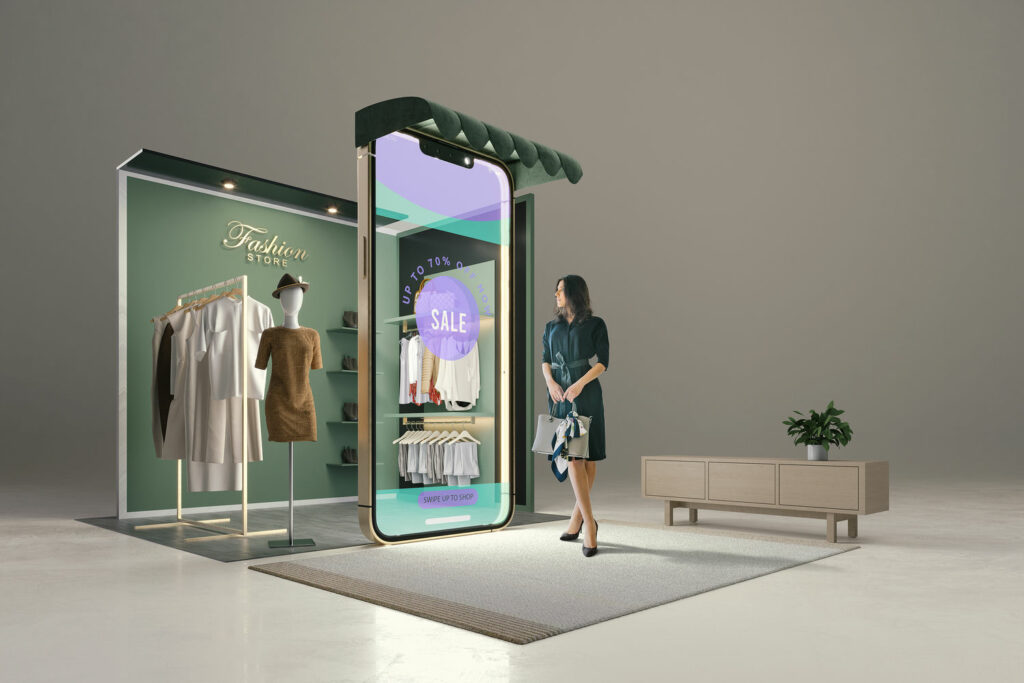
Ecommerce has shifted everything and revolutionized the way online shopping is done today.
Not only does it offer convenience, but it also offers variety and accessibility like never before.
Understanding the psychology of online shopping helps businesses tailor their strategies and provide online shoppers with a more elevated, engaging, and satisfying experience.
Unlocking the intricacies of the psychology behind online shopping is a game-changer for businesses.
By comprehending the factors that influence consumer behavior, companies can fine-tune their strategies to offer online shoppers a more elevated, engaging, and ultimately satisfying experience.
This not only enhances customer satisfaction but, importantly, contributes to increased sales.
Offering a more elevated and satisfying experience is not just about pleasing consumers; it’s a strategic move that empowers businesses to sell more effectively in the competitive online landscape.
The Psychology of Online Shopping Behavior
Behavioral science focuses on understanding the systematic biases and decision-making shortcuts that people employ in various situations, including shopping.
When it comes to the psychology of shopping, it investigates the process behind cognition in terms of emotions and behaviors that would influence and navigate shoppers through their online shopping journey.

The Role of Cognitive Biases on Shopper Psychology
Cognitive biases are inclinations in human reasoning and thinking that oppose logic, reasoning, and plausibility.
They are intuitive and subconscious tendencies that form the basis of human judgement, decision-making, and behavior.
Think of the role of cognitive bias as mental shortcuts that our brains use to simplify complex decisions.
Social Influence and Persuasion
Robert Cialdini (1984) demonstrated the concept of reciprocity, which states that when people receive something of value, they feel obligated to give something back. Retailers who offer samples, trials, and individualized recommendations to customers are examples of this principle.
Building on the idea of reciprocity, the psychology of social proof becomes crucial in understanding shopper behavior. More people are likely to conform to the actions of others, even if they personally disagree.
From the exchange of value to the influence of social proof, these psychological dynamics play a vital role in shaping and predicting consumer choices.
We can see that through the showcasing of user-generated content and customer reviews, we can signal to other online shoppers that a product is widely accepted and trusted.
Emotional-Driven Decision-Making
We need to not forget that, at the end of the day, we are selling to people who have the fundamentals of overall emotional responses.
This is why it is important to highlight the significance of creating emotional connections between both shoppers and products through storytelling, branding, and immersive experiences.

Emotional Decision Making and Product Descriptions
Writing compelling product descriptions is a powerful way to deepen emotional connections with your audience.
Rather than merely listing features, focus on telling a story that resonates with your customers.
Describe not just what the product does but how it enhances their lives. Inject personality into your descriptions, aligning them with your brand voice.
Consider addressing potential pain points and offering solutions within the description, showing empathy and understanding.
Personalization and Tailored Experiences
By knowing who your target is, you are able to craft a consistent narrative that guides shoppers throughout the customer journey.
Use shopper insights to integrate psychology-based strategies across all touchpoints, whether online or offline.
For instance, if your analysis reveals that certain colors or visual elements evoke positive emotions among your target audience, incorporate these elements consistently in both your online and offline marketing materials.
This could mean using similar imagery in your social media campaigns and in-store displays.
By aligning your strategies based on shopper insights, you create a cohesive and impactful brand experience that resonates with your audience across various channels.
Ethical Considerations
Using shopper psychology and behavioral science are powerful tools, yet they raise ethical questions since they exploit cognitive biases and employ persuasive tactics to manipulate consumers, which can erode trust and damage brand reputation.
To navigate this ethical landscape responsibly, consider practices that prioritize transparency and respect for your customers.
Instead of relying solely on persuasive tactics, focus on building trust by incorporating genuine elements into your marketing strategy.
One effective approach is to highlight real customer reviews, offering authentic insights into your products or services.
Additionally, avoid overselling by providing clear and honest information, steering away from frustrating or misleading shoppers.

Psychological Factors of Consumer Trust in Online Shopping
Consumer trust is vital when it comes to the adoption of any technology. Here are some personal factors that play a crucial role in influencing the different types of buyers.
Personal Factors
- Age: People of different ages have different needs and preferences.
- Income: Higher-income consumers may have more purchasing power and willingness to pay for more high-quality products and services.
- Gender: Men and women value differently; they have different preferences regarding products and services.
- Lifestyle: A consumer’s lifestyle can affect their complex buying behavior.
- Personality: Personality traits can also affect buying habits; whether someone is more extroverted or introverted, they may shift their interest into social or solitary habits.
Psychological Factors
Psychological factors are an important aspect when it comes to shaping consumer behavior, which is mainly internal and subjective, focusing on how consumers perceive, interpret, and process information about how they purchase.
Motivation: Typically relates back to the desire that pushes or prompts customers to take the needed action. What influences motivations are as follows: personal needs, desires, and goals.
Perception: How a customer interprets and analyzes the information that your product or service has to offer. Factors that may influence perception are past experiences, expectations, and cultural background.
Learning: The method by which consumers acquire knowledge, skills, or attitudes about your product or service.
Beliefs: Refers to the cognitive framework of the consumer or assumptions surrounding your product or service, which can be based on personal experience, cultural values, or even social influence.
Attitudes: Personal experience, social influence, and marketing messages are just a few examples of the factors that can affect how consumers evaluate or perceive a product or service, which may be positive, negative, or neutral.
Social Factors
Culture: Shared beliefs, values, customs, behaviors, and artifacts that define a group of people or society.
Family: Parents frequently influence what their children buy, and spouses frequently make purchasing decisions together.
Social Class: People with similar income levels, education, occupation, and lifestyle. They may be shaped depending on what people purchase, where they shop, and how they overall formulate these purchasing decisions.
Situation Factors:
These factors refer to external conditions that affect consumer behavior, which include purchase timing, location, and the buying occasion. Some of which are:
Location: Consumers may be likely to purchase luxury items in upscale department stores or shopping centers.
Buying Occasion: A special event may trigger customers to make a purchase.

Psychological Effects of Online Shopping
Research has shown that online shopping can reduce sadness and restore a sense of control. Of course, when done in moderation, retail therapy is considered to give customers psychological and therapeutic value.
Recognize the therapeutic value of online shopping and consider incorporating messaging that emphasizes the positive impact of a purchase on the customer’s well-being.
Happiness After Purchase
The anticipation and possibility of buying a product release dopamine, which is the feel-good hormone.
Capitalize on the anticipation factor by building excitement before the purchase. Implement countdowns, exclusive previews, or limited-time offers to keep customers engaged.
Visualization Distraction
Customers feel positive when they’re navigating through the brand’s items, whether they’re products or services.
Make sure your online platform is both user-friendly and visually appealing. Make the shopping experience enjoyable and positive to enhance the feel-good aspect during navigation.
Happy Mood
Post-purchase has the same effects as pre-purchase since it fuels dopamine release. It can increase levels of excitement and anticipation as customers wait for the arrival of their purchases.
Keep the excitement alive post-purchase by engaging customers with personalized thank-you messages, order tracking, and exclusive previews of upcoming products or services.
What Drives Consumers to Purchase?
Understanding why people buy what they buy can be a major challenge for businesses, especially in the online realm.
While it’s tempting to believe that all purchases are made rationally, the truth is that psychological factors play a significant role in influencing consumer behavior.
Delving into these deep-seated drives can unlock the secrets to attracting and converting customers in the digital marketplace.
Impulse Buying
One key driver is impulse buying, a phenomenon where consumers make unplanned purchases without much thought. Frequently, these factors cause this behavior to occur:
- Seeing the product itself: Whether it’s a visually appealing product page, an influencer showcasing it on social media, or a celebrity using it, visual exposure can spark a desire for immediate possession.
- Vicarious ownership: Imagining oneself using the product and experiencing its benefits can trigger a strong emotional connection and lead to a purchase.
- Loss aversion: The fear of missing out on a great opportunity, especially when time-limited offers or limited quantities are involved, can drive impulse buying.
- Conditional free shipping: Setting a minimum purchase threshold for free shipping can incentivize customers to spend more than they originally intended.
Color Palettes
Another influential factor is the color scheme. Studies show that 87% of consumers base their purchasing decisions on color, highlighting its undeniable impact on mood and behavior.
Choosing colors that resonate with your target audience and evoke the desired emotions can significantly influence their buying decisions.
- Red: Take a cue from brands like McDonald’s, which uses red in its logo and overall branding. Red is known to stimulate appetite and create a sense of urgency, making it a strategic choice for fast-food chains.
- Black: High-end brands often use black to convey a sense of luxury and sophistication. This color is associated with exclusivity and elegance, making it a popular choice for premium products and services.
- Blues and Greens: Brands focusing on wellness or eco-friendly products often incorporate calming blues and greens. These colors are associated with nature, tranquility, and health, creating a sense of well-being among consumers.
- Orange: Orange is associated with energy and enthusiasm. Brands targeting a youthful and vibrant audience may leverage orange to evoke a sense of excitement and positivity.
Here are some key takeaways:
- Understanding the psychological motivations of your consumers is crucial for increasing conversions.
- Visual exposure, vicarious ownership, fear of missing out, and strategic marketing techniques like limited-time offers and conditional free shipping all contribute to impulse buying.
- Color has a powerful influence on mood and behavior, and aligning your brand colors with your target audience can significantly impact their buying decisions.

Build Your Ecommerce Website With Psychology
- Website Design
When deciding your store’s primary design, it is essential to consider consumer psychology, whether it be from color choices to visuals to loading speed.
- Visuals
Visuals have a significant influence on most purchasing decisions. Images are vital in ecommerce since they are the only way customers can get a feel for the product before purchasing it.
In order to incorporate visuals, use a variety of well-lit, high-quality images from varying angles, to put customers’ minds at ease about purchasing your products.
- Color Scheme
Color’s are important since they offer customers the opportunity to feel a needed emotion. It’s important that, when you’re establishing your brand identity, you really think about your color scheme.
- What do your brand colors say to customers?
- How do you call for their attention with CTAs and other important information?
- Does color add to your conversation or distract them?
- Speed and Performance
Loading under 3 seconds is vital. Optimize your images to prevent any loss of time while your website is loading. If need be, you can use lazy images, which load when customers scroll and land on specific aspects that have visuals.
- Social Proof
One of the primary motivations for consumer behavior is Social Proof. Include customer reviews and ratings for each product, or even include an incentive for customers to share their feedback,
Wherever it makes sense on your website, include third party validation or awards for your products.
Friction Reduction
Friction includes anything that comes in between the customer who wants to buy from you and the sale. Friction not only causes shopping cart abandonment but low conversion rates as well.
Eliminating as much friction as possible should be one of your priorities for a positive user experience.
Easy Checkout
The check out process should be as quick and simple as possible. Any unnecessary steps should be cut out to ensure the whole process is transparent and easy.
Transparent Costs
One of many customers pet peeves is getting all the way through the checkout process to discover that shipping is an extra $25.
Being clear and transparent about shipping and other costs should be offered from the very beginning to avoid potential customer loss.
Secure Payment Gateways
Secure payment gateways are necessary since customers are already wary of offering sensitive payment information.
Ensure to offer payment options that are secure and that customers trust; prominently display those badges; and watch as customers slowly lean into your online store.

Psychology of Online Shopping
From the subtle nudges of color psychology to the persuasive power of social proof, the psychological factors at play are undeniable.
Recognizing these forces allows us to craft more effective marketing strategies, design engaging product pages, and ultimately create a more satisfying and personalized shopping experience for our customers.
However, it’s crucial to remember the ethical considerations involved. While leveraging psychological insights can be a powerful tool, exploiting them for manipulative purposes can erode trust and damage a brand’s reputation.
The key lies in utilizing these insights responsibly and crafting solutions that benefit both businesses and consumers alike.
Ultimately, understanding the psychology of online shopping is not about manipulating consumers but rather about creating a more meaningful and engaging experience for them.
By tapping into their emotions, desires, and motivations, we can build stronger relationships, foster brand loyalty, and ensure that the online shopping journey is not just convenient but also enjoyable and fulfilling.
TAGS:
Join the GuruDesk community and be among the first ones to discover the hottest trends in web services! We are a team of web experts and we love sharing our knowledge and experience with our readers! We share tips and tricks on a wide range of topics, including web development, cloud services, and hosting. Whether you are a seasoned pro or just starting out, we promise you will find valuable information here. So go ahead, hit that “Subscribe” button and let the fun begin!






